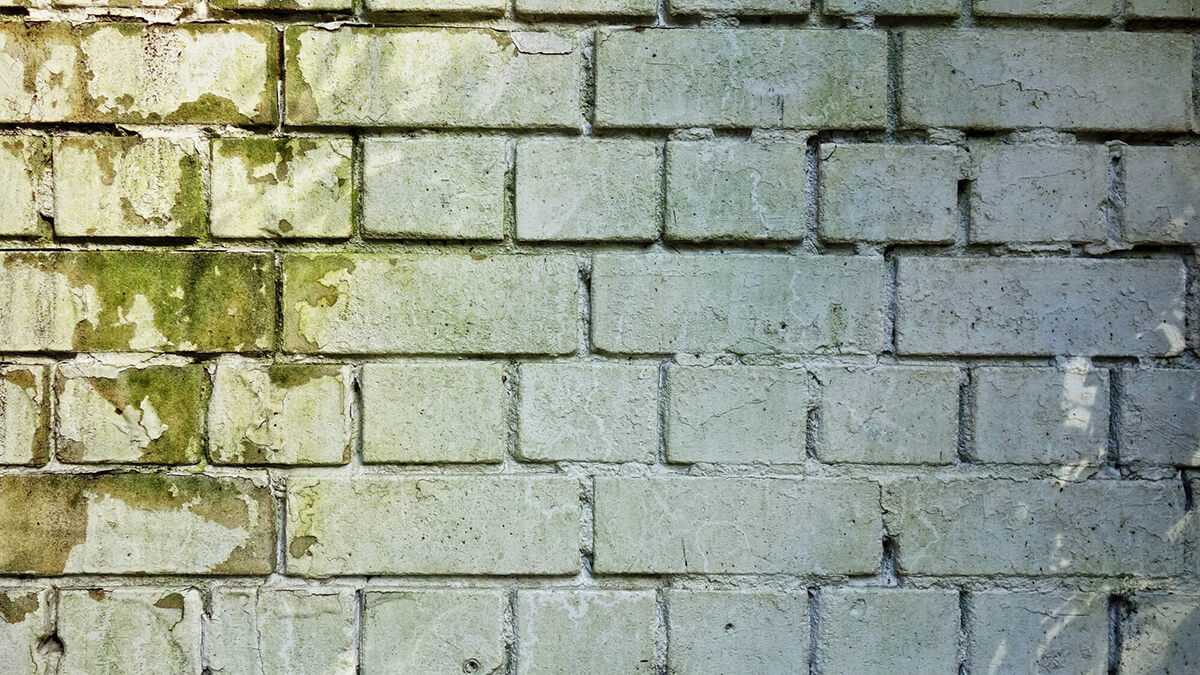Mold isn’t just a smelly spot on the wall, it can stop a home sale in its tracks. But here’s the truth: you can sell a house with mold. It’s all about how you handle it, what you disclose, and whether you’re fixing it or selling as-is. In this guide, I’ll walk you through what works, what to avoid, and how to keep buyers from running for the hills.
If you’re thinking, “I just want this house sold,” you’re not alone. Mold doesn’t have to be the dealbreaker it’s made out to be. With the right info, you’ll be able to move forward, honestly and confidently.
Want to skip the repairs and move on your timeline? Get a data-backed cash offer from iBuyer.com, fast, fair, and no surprises.
Instant Valuation, Confidential Deals with a Certified iBuyer.com Specialist.
Sell Smart, Sell Fast, Get Sold. No Obligations.
Sell a House With Mold
- Do You Have to Disclose Mold When Selling a House?
- What Happens If Mold Isn’t Disclosed?
- Understanding Mold: What Every Seller Should Know
- How Mold Affects Your Home’s Value and Buyer Interest
- Smart Pricing Strategies for a House with Mold
- Marketing a Home with Mold the Right Way
- Selling Options for Homes with Mold
- Reilly’s Two Cents
- Yes, You Can Sell a House With Mold
- Frequently Asked Questions
Do You Have to Disclose Mold When Selling a House?
Yes, in almost every state, you’re legally required to tell buyers about any known mold problems. Whether it’s a minor bathroom patch or a full-blown basement issue, you can’t just paint over it and hope no one notices. Mold is considered a material defect, something that could impact a buyer’s decision to purchase.
Disclosure rules vary, but most states require you to fill out a form that lists issues like water damage, leaks, or environmental hazards. Even if your state doesn’t mention mold specifically, skipping disclosure can lead to lawsuits later. A buyer could claim you hid the problem, and that gets expensive fast.
If you’re not sure what your state requires, talk to a local real estate agent or attorney. And always document any cleanup or mold remediation you’ve already done, it shows buyers you took the issue seriously.
What Happens If Mold Isn’t Disclosed?
If you sell a house and don’t mention known mold problems, you’re opening the door to legal trouble. Buyers can sue if they find out you covered something up, especially if it affects their health or leads to big repair bills. Courts often side with the buyer if the seller clearly knew about the issue and kept quiet.
Beyond lawsuits, nondisclosure can delay or completely derail a deal. Most buyers will order a home inspection, and mold tends to show up. If it wasn’t disclosed ahead of time, it raises red flags and kills trust. That can cost you both time and money.
Honesty is the safer, smarter path. Disclose what you know, and you’ll protect yourself, and possibly keep the deal on track.
Understanding Mold: What Every Seller Should Know
Before deciding what to do with a mold problem, it helps to understand what you’re dealing with. Mold isn’t just gross, it grows for a reason, comes in different forms, and varies widely in how much it costs to fix.
What Causes Mold to Grow in Homes?
Mold thrives in damp, dark places. Leaky pipes, roof issues, poor ventilation, or past flooding are common causes. Bathrooms, basements, and kitchens are mold’s favorite spots, especially if moisture sticks around longer than it should. Even something as small as condensation around windows can trigger growth.
Types of Mold You Might Encounter
Not all mold is dangerous, but some types are more concerning than others. Common household molds include:
- Cladosporium – Found on fabric and wood, usually not toxic.
- Penicillium – Blue or green, spreads fast, common in water-damaged areas.
- Stachybotrys (Black Mold) – The one everyone fears. It’s less common but can release toxins and cause health problems.
A mold inspection can tell you what type you’re dealing with and how serious it is.
How Much Does Mold Remediation Cost?
Small jobs, like surface mold in a bathroom, can cost under $500 if you catch it early. But if it’s behind walls, under flooring, or throughout a basement, remediation can run between $2,000 and $6,000. Severe cases caused by flooding or long-term leaks might go even higher. Getting a quote from a certified pro helps you make an informed decision.
How to Handle Black Mold or Serious Infestations
Black mold has a reputation for being the worst kind, and in many cases, that’s true. It’s not always toxic, but when it is, it can cause headaches, respiratory issues, and major buyer concerns. If a home inspector finds it, expect pushback or even a canceled offer.
The key with serious mold is getting a professional involved right away. Don’t try to bleach it and call it a day. Certified mold remediation specialists will find the source, clean it safely, and help prevent it from coming back. They’ll also provide a detailed report, a must-have for proving the issue was handled.
If you’re dealing with a heavy infestation, it’s better to be upfront. Trying to hide it will almost always backfire.
How Mold Affects Your Home’s Value and Buyer Interest
Buyers get nervous when they hear the word “mold.” Even if it’s been cleaned up, the damage to their confidence, and your asking price, can stick around. Mold can lower your home’s value by 10 to 30 %, depending on how severe it is and whether it’s been fully remediated.
It also slows down sales. Most buyers will walk if they think mold is hidden or not properly handled. Even if they’re interested, they might ask for a price cut, extra inspections, or repairs before moving forward. Homes with visible mold or a mold history often spend more time on the market.
To protect your value, disclose everything, show receipts from mold cleanup, and highlight any steps you’ve taken to prevent it from coming back.
Smart Pricing Strategies for a House with Mold
Setting the right price when your home has mold isn’t just about cutting value, it’s about being strategic. Buyers expect a deal, but you don’t have to leave money on the table. Here’s how to price your home with confidence and transparency.
Look at Similar Sales in Your Area
Start by checking out what other homes in your neighborhood have sold for, especially ones with similar issues. A real estate agent can run a comparative market analysis (CMA) to help you understand what’s realistic. Mold doesn’t have to kill the deal, but it usually means pricing slightly under market value.
Get Estimates and Use Them as Leverage
Have a mold remediation pro give you a quote, even if you don’t plan to do the work. Sharing that estimate with buyers builds trust and gives them a clear picture of what they’ll need to invest. Some sellers use these numbers to offer a “mold credit” rather than lowering the list price.
Lead With the Positives
Your home is more than its mold problem. Highlight the upgrades, location, or big-ticket items like a new roof or HVAC system. Buyers may overlook the mold if everything else checks out.
Marketing a Home with Mold the Right Way
Selling a home with mold isn’t just about cleanup, it’s also about how you talk about it. A strong, honest listing can make a big difference in buyer interest and how quickly you sell.
Be Clear About the Mold
Don’t hide it, buyers will find out eventually. If mold is present, mention it in the listing description. Be upfront about where it is, how serious it is, and whether it’s been evaluated. That kind of honesty builds trust and can protect you from legal issues later.
Share Inspection or Remediation Details
If you’ve had a mold inspection or hired a professional to do remediation, include that info. A summary or copy of the report helps buyers understand what’s been done and what’s left to do. It also shows you’re not trying to pass the problem on without context.
Lean Into the Home’s Strengths
Even with mold, your home still has value. Use high-quality photos, call out recent upgrades, and highlight things like a good location, large lot, or updated kitchen. The right buyer might see past the mold if everything else lines up.
Selling Options for Homes with Mold
If your house has mold, you’ve still got multiple ways to sell, it’s just about finding the one that fits your timeline, budget, and goals. Here’s a look at the most common options sellers explore.
Selling As-Is
This is the most straightforward route. You sell the house in its current condition, no repairs, no cleanup. Buyers know what they’re getting, and you avoid spending money on mold remediation. Just be sure to fully disclose the mold issue upfront. Expect to price the home lower, but the tradeoff is a faster, simpler sale.
Investors and Flippers
Real estate investors and house flippers are often on the hunt for homes with problems, including mold. They’re less concerned about cosmetics and more focused on the profit margin. These buyers usually offer below market value, but they move quickly and don’t ask for long inspection or repair negotiations.
Cash Buyers
Cash buyers, especially companies that specialize in buying problem properties, are a great fit for mold-affected homes. They don’t need financing, so deals close faster, and they’re used to buying homes “as-is.” This option works best if you want to skip showings, open houses, and months on the market. (Yes, iBuyer.com does this, on your timeline.)
Online Platforms and Real Estate Websites
You can list your home on sites like Zillow, Redfin, or Realtor.com, even with mold issues. Just be transparent in your listing and prepare for slower buyer interest unless the price reflects the condition. These platforms give you exposure but don’t screen buyers or speed up the process.
Traditional Real Estate Market
Hiring an agent and listing your home the old-fashioned way is still an option, even with mold. The right agent can help you price realistically, write a strong listing, and find buyers willing to work with the issue. But if the mold is severe or unresolved, expect buyers to negotiate hard or walk away after inspections.
Reilly’s Two Cents
I’ve worked with a lot of sellers facing mold issues, and I can tell you, it’s more common than you think. Whether it shows up in a crawlspace, attic, or a forgotten corner of the basement, mold doesn’t have to kill your sale. The key is knowing how to handle it without panicking.
Here are a few tips I always give my clients:
- Don’t try to hide it. Buyers almost always bring in inspectors, and mold is one of the first things they’ll flag. Disclosing it early puts you in control of the story, instead of reacting when it’s discovered.
- Get a professional opinion. Even if you’re selling as-is, have a licensed mold remediation expert give you a quote. It helps you set realistic expectations, and can give buyers peace of mind if they choose to handle it themselves.
- Clean up what you can, safely. For smaller issues (under 10 square feet), you might be able to clean it with the right gear and cleaner. Just don’t cut corners. If it looks sloppy or incomplete, buyers will notice.
- Keep your receipts. If you’ve done any mold testing or cleanup, save that documentation. It proves you took the issue seriously and can help reassure cautious buyers.
- Focus on the big picture. Mold might be the problem today, but buyers also care about roof age, HVAC systems, layout, and location. Don’t forget to highlight those strengths.
Mold is just a bump in the road, not the end of your sale. With the right approach, you can still move forward and come out ahead.
Yes, You Can Sell a House With Mold
Mold might feel like a major setback, but it doesn’t have to stop your sale. Whether you fix it up, sell as-is, or work with a cash buyer, there’s a path forward. What matters most is transparency, being upfront with buyers and making smart decisions based on your timeline and budget.
If you’re looking to skip the stress, avoid repairs, and move on your schedule, iBuyer.com can help. We’ll give you a fast, fair cash offer so you can move forward without mold drama.
Compare Cash Offers from Top Home Buyers. Delivered by Your Local iBuyer Certified Specialist.
One Expert, Multiple Offers, No Obligation.
Frequently Asked Questions
Yes, you can, but you must disclose it. Failing to mention a known mold issue could lead to legal problems after the sale.
Not necessarily. You can sell the home as-is, but expect a lower price and fewer interested buyers unless you offer transparency or concessions.
Small jobs may cost a few hundred dollars. Larger infestations can run between $2,000 and $6,000 or more, depending on severity and location.
Buyers may ask for a price reduction, demand repairs, or walk away. It’s best to address the issue early or prepare to negotiate.
Yes. Mold, especially if untreated, can lower your home’s value and make it harder to sell through traditional channels.
Reilly Dzurick is a seasoned real estate agent at Get Land Florida, bringing over six years of industry experience to the vibrant Vero Beach market. She is known for her deep understanding of local real estate trends and her dedication to helping clients find their dream properties. Reilly’s journey in real estate is complemented by her academic background in Public Relations, Advertising, and Applied Communication from the University of North Florida. This unique combination of skills has enabled her to seamlessly blend traditional real estate practices with cutting-edge marketing strategies, ensuring her clients’ properties gain maximum visibility and sell quickly.
Reilly’s career began with a strong foundation in social media marketing and brand communications. These skills have proven invaluable in her real estate practice, allowing her to offer innovative marketing solutions that set her apart in the industry. Her exceptional ability to understand and meet clients’ needs has earned her a reputation for providing a smooth and satisfying transaction process. Reilly’s commitment to client satisfaction and her innovative approach have garnered her a loyal client base and numerous referrals, underscoring her success and dedication in the field.
Beyond her professional achievements, Reilly is passionate about the Vero Beach community. She enjoys helping newcomers discover the charm of this beautiful area and find their perfect home.
Outside of work, she loves exploring Florida’s stunning landscapes and spending quality time with her family. Reilly Dzurick’s combination of expertise, marketing savvy, and personal touch makes her a standout real estate agent in Vero Beach, Florida.




